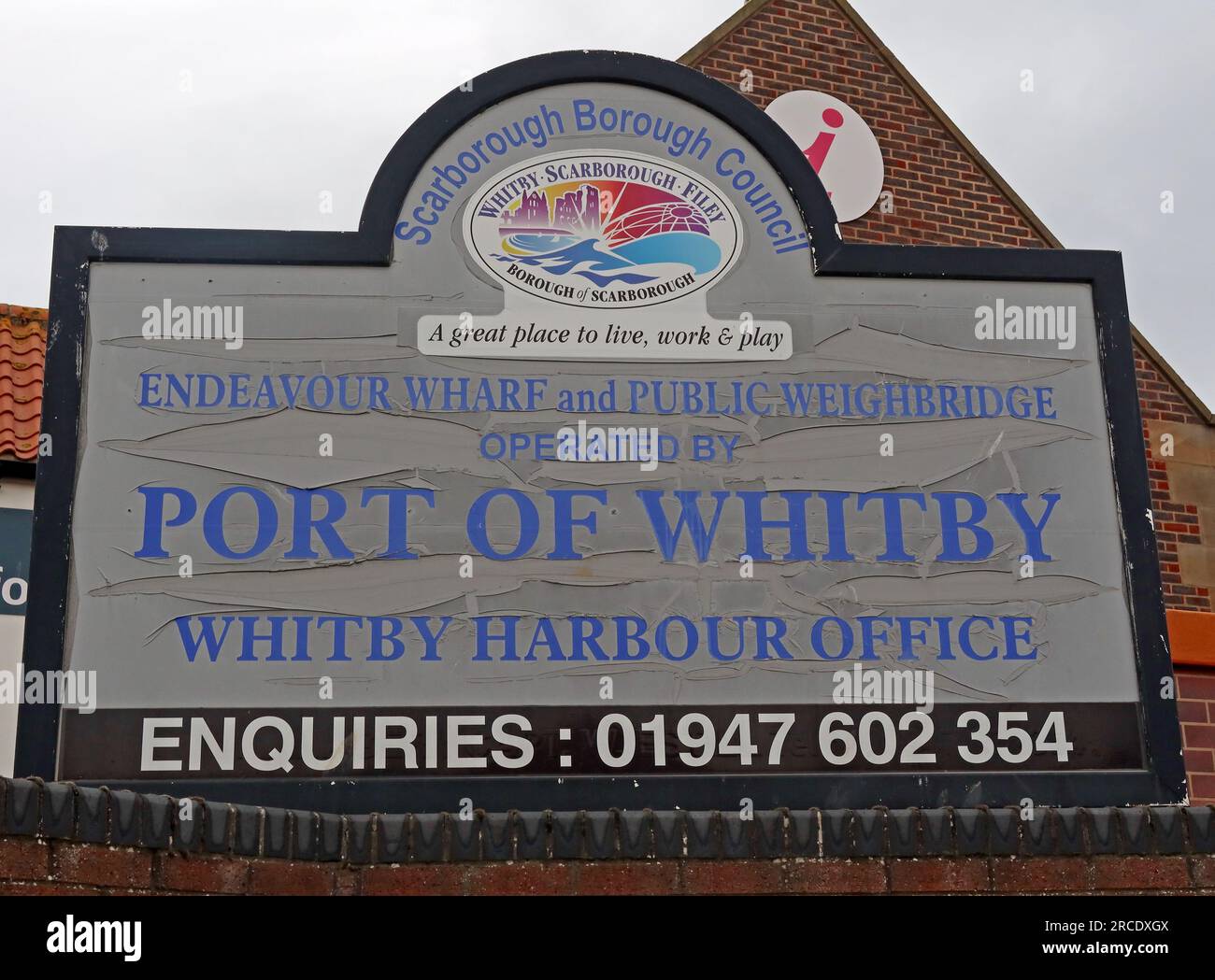Endeavour Wharf & public Weighbridge sign,at Port of Whitby harbour office -Scarborough Borough Council facility,North Yorkshire, England, UK,YO21 1EU

Image details
Contributor:
Tony Smith / Alamy Stock PhotoImage ID:
2RCDXGXFile size:
51.6 MB (1.5 MB Compressed download)Releases:
Model - no | Property - noDo I need a release?Dimensions:
4944 x 3648 px | 41.9 x 30.9 cm | 16.5 x 12.2 inches | 300dpiDate taken:
25 September 2022Location:
Harbour Office Endeavour Wharf Whitby, North Yorkshire, England, UK, YO21 1DNMore information:
The Port of Whitby is an ancient and historic seaport on the North Yorkshire coast of England. The port lies at the mouth of the River Esk, where it enters into the North Sea. A port has been in existence at Whitby since at least the 7th century, when it was used to bring in supplies for Whitby Abbey. The port is famous for being the port of origin for the sailings of Captain Cook, and some of the ships that he sailed on were also built in the harbour. Commercial cargo ceased in the late 20th century, however, the port is still an important location for the landing of fish. Fish were being landed at Whitby during the time that the first abbey had been built in 657 The port was never equal to other ports in the area such as Hull or Middlesbrough. This is due to the hinterland that surrounded the port, with Whitby being largely cut-off from overland travel until the 18th and 19th centuries, it had no great industries to export or import for, being surrounded on all sides of the river by moorland (except for the coast to the north). Trade through the port accelerated with the coming of the railways, but its main function was either as a shelter for ships from storms in the North Sea, or as a re-supply point. Between 1702 and 1704, the number of collier ships alone totalled 98, Bridlington, Hull and Scarborough only hosted 48, 28 and 54 respectively. The safe haven almost guaranteed at Whitby (and at Scarborough and Bridlington too), allowed the port to charge a levy towards the upkeep of the harbour and piers. The levy also applied to passing trade of coal from many north-eastern locations, with the levy not being rescinded until 1861 A survey in the 1950s determined that the port at Whitby was not as successful as other neighbouring cargo ports such as Hull, Teesside and West Hartlepool, on account of its lack of urban sprawl, and the absence of warehouses on the dock side with which to store goods in a safe manner before onward export, or inward transportation.